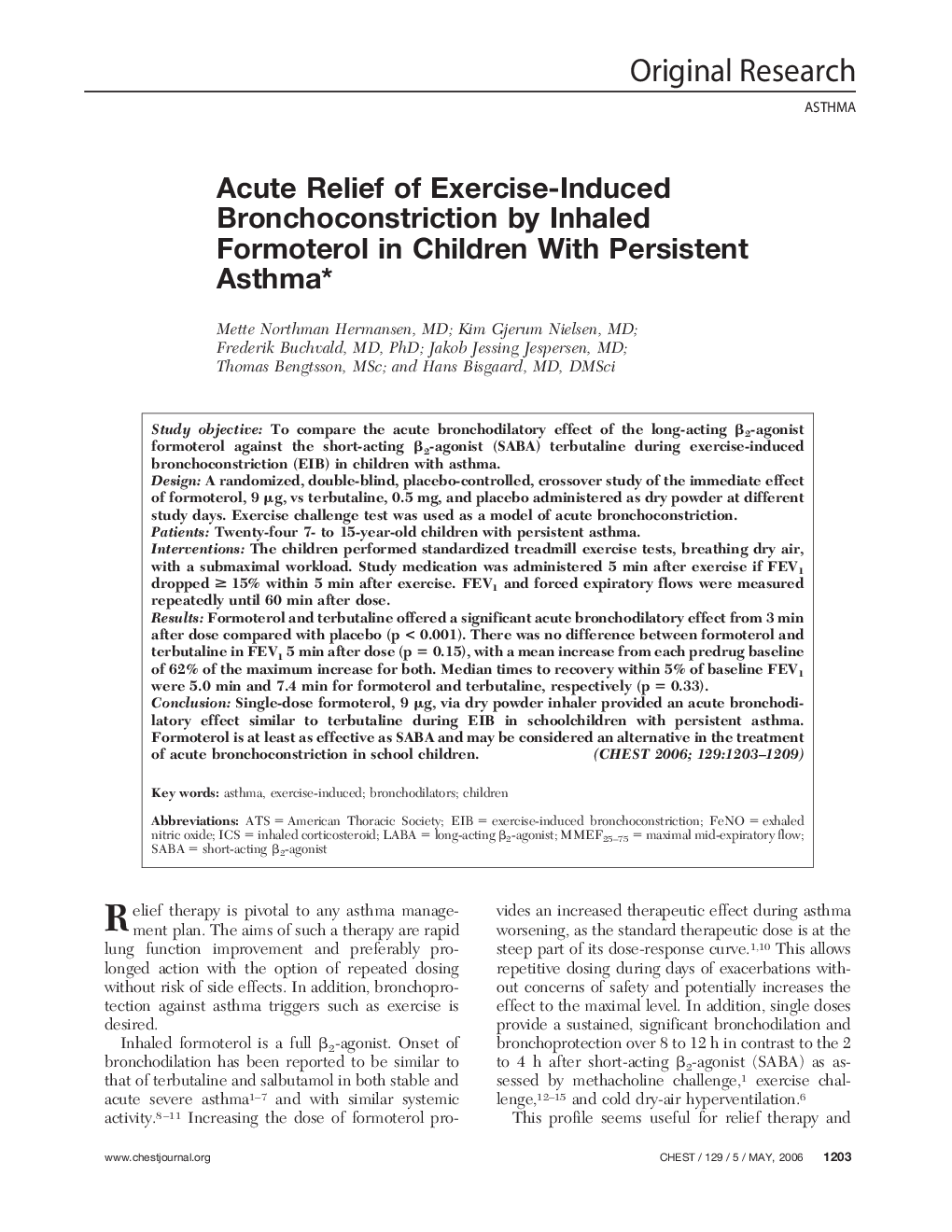| Article ID | Journal | Published Year | Pages | File Type |
|---|---|---|---|---|
| 2905883 | Chest | 2006 | 7 Pages |
Study objectiveTo compare the acute bronchodilatory effect of the long-acting β2-agonist formoterol against the short-acting β2-agonist (SABA) terbutaline during exercise-induced bronchoconstriction (EIB) in children with asthma.DesignA randomized, double-blind, placebo-controlled, crossover study of the immediate effect of formoterol, 9 μg, vs terbutaline, 0.5 mg, and placebo administered as dry powder at different study days. Exercise challenge test was used as a model of acute bronchoconstriction.PatientsTwenty-four 7- to 15-year-old children with persistent asthma.InterventionsThe children performed standardized treadmill exercise tests, breathing dry air, with a submaximal workload. Study medication was administered 5 min after exercise if FEV1 dropped ≥ 15% within 5 min after exercise. FEV1 and forced expiratory flows were measured repeatedly until 60 min after dose.ResultsFormoterol and terbutaline offered a significant acute bronchodilatory effect from 3 min after dose compared with placebo (p < 0.001). There was no difference between formoterol and terbutaline in FEV1 5 min after dose (p = 0.15), with a mean increase from each predrug baseline of 62% of the maximum increase for both. Median times to recovery within 5% of baseline FEV1 were 5.0 min and 7.4 min for formoterol and terbutaline, respectively (p = 0.33).ConclusionSingle-dose formoterol, 9 μg, via dry powder inhaler provided an acute bronchodilatory effect similar to terbutaline during EIB in schoolchildren with persistent asthma. Formoterol is at least as effective as SABA and may be considered an alternative in the treatment of acute bronchoconstriction in school children.
